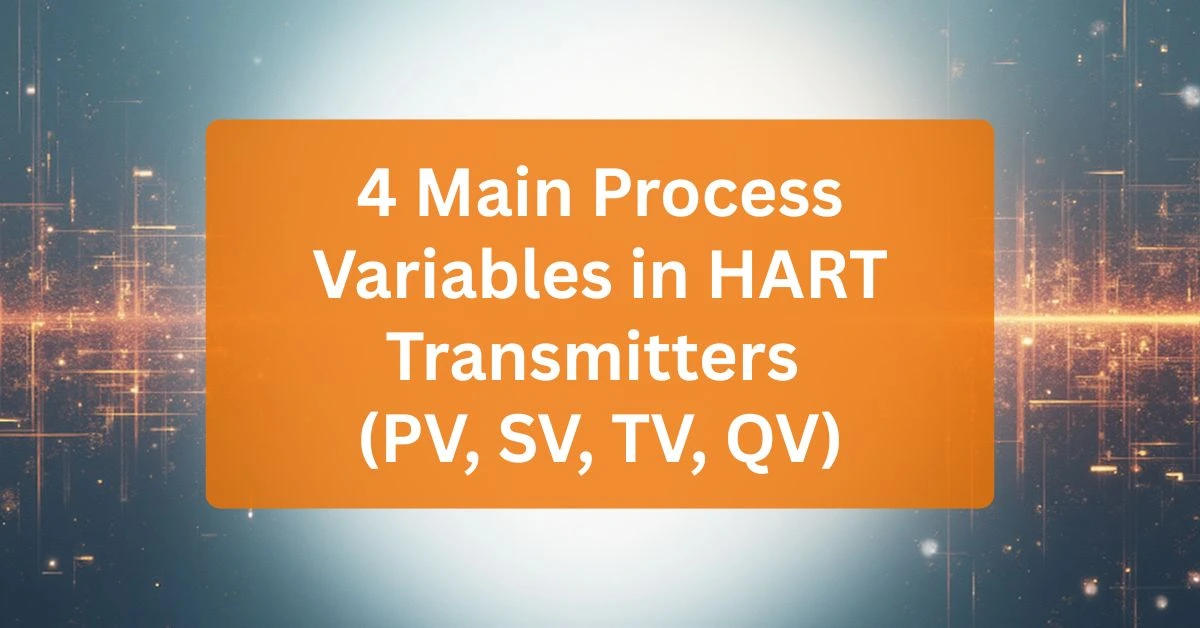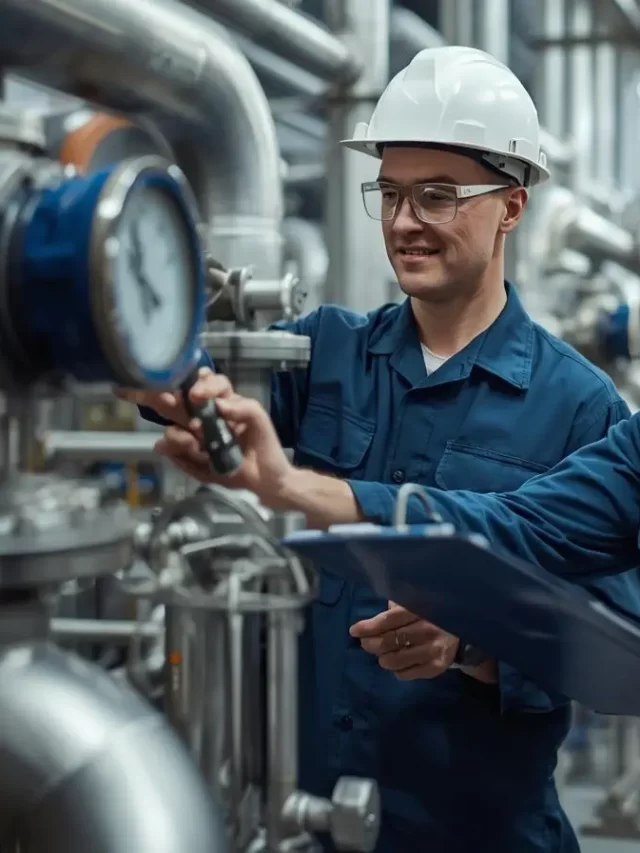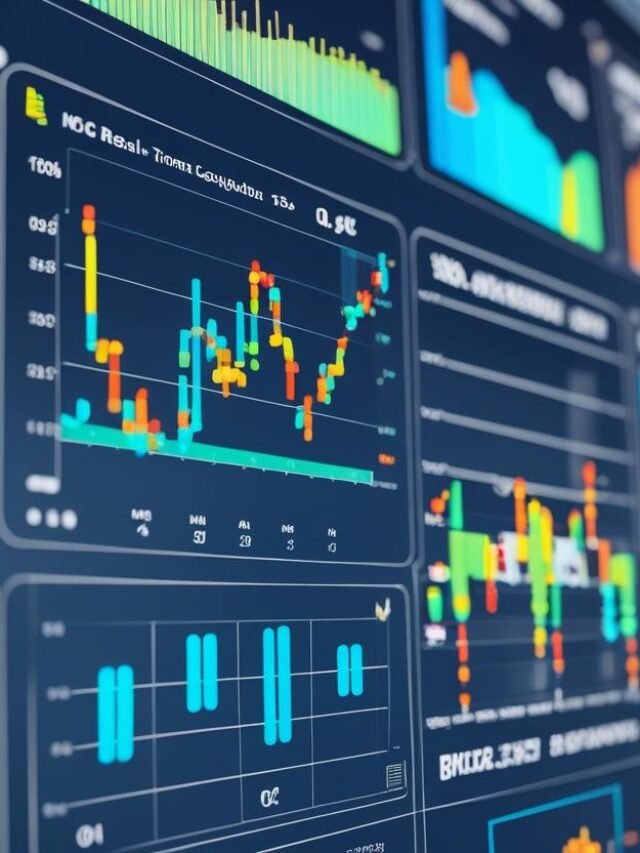Table of Contents
ToggleProcess Variables: Introduction
In modern process plants, accuracy, diagnostics and communication matter more than ever.
Traditional 4–20 mA transmitters could give you only one value.
But smart HART transmitters give you four.
If you have ever connected a HART communicator and scrolled through the menu thinking, “PV, SV, TV, QV… what do all these mean?” — this guide is for you.
Smart transmitters allow multiple process variables to be accessed at the same time, giving a deeper view of real-time process conditions.
Without reliable process variables, automation systems would not be able to control, monitor, or protect industrial processes effectively.
In this article we will understand all four process variables in HART transmitter.
What Makes HART Transmitters Different?
A normal analog transmitter gives you one variable over 4–20 mA.
HART transmitters add a digital layer on the same two wires.
So instead of one value, you get:
- PV – Primary Variable
- SV – Secondary Variable
- TV – Tertiary Variable
- QV – Quaternary Variable
Think of the transmitter as a small “measurement team” sending multiple useful insights instead of a single number.
Only PV is sent through 4–20 mA. All four variables are available digitally through HART.
1. PV – Primary Variable (The Main Measurement)
Imagine standing in front of a DP transmitter in the field.
If someone asks, “What does this transmitter measure?” — your answer is the PV.
PV is:
- The main purpose of the transmitter
- The only value mapped to 4–20 mA
- Always present in every HART device
Common PV Examples
- Pressure transmitter → PV = Pressure
- Flow transmitter → PV = Flow
- Level transmitter → PV = Level
- Temperature transmitter → PV = Temperature
Practical Example
A DP transmitter measuring 0–100 mbar will send:
- 4 mA at 0 mbar
- 20 mA at 100 mbar
- HART digitally sends “PV = actual DP value”
Why PV Matters
Your DCS/PLC uses PV for:
- PID control
- Process monitoring
- Interlocks and alarms
PV = The primary feedback for control loops.
2. SV – Secondary Variable (The Helpful Companion)
Now imagine you open your HART communicator.
Below PV, you see another value — SV.
SV is like the “bonus information” the transmitter knows.
SV can be:
- A second measured value
- A derived value
- A supporting variable that improves accuracy
Example – Multivariable DP Transmitter
A multivariable device measuring:
- Differential Pressure
- Static Pressure
- Temperature
You may see:
- PV = Differential Pressure
- SV = Static Pressure
That static pressure (SV) helps:
- Correct density
- Detect line pressure drops
- Improve flow accuracy
Why SV Matters
SV gives extra insight without installing an extra transmitter.
This reduces:
- Cost
- Wiring
- Installation time
3. TV – Tertiary Variable (The Accuracy Enhancer)
TV is the third variable the transmitter provides.
Think of TV as the “context” the transmitter uses to refine calculations.
TV is usually:
- A derived or indirectly measured value
- Used for compensation
- Important in flow and density measurements
Example: Flow Compensation
In a multivariable DP transmitter:
- PV = DP
- SV = Static Pressure
- TV = Temperature
Temperature affects:
- Density
- Viscosity
- Flow calculation
So TV helps the transmitter compute more accurate flow.
Other TV Examples
- Density transmitter → TV = temperature
- Pressurized level measurement → TV = vapor pressure
Why TV Matters
TV ensures your final measurement remains accurate, even when process conditions change.
4. QV – Quaternary Variable (The Smart Result)
QV is the fourth and most advanced variable.
It is usually the final output after combining PV, SV, and TV.
QV is often:
- Mass flow
- Totalized flow
- Density at reference condition
- Diagnostic indicators
Example – Smart Flow Transmitter
A smart DP flow transmitter calculates:
- PV = DP
- SV = Static Pressure
- TV = Temperature
- QV = Mass Flow
The QV becomes the ready-to-use engineering value.
Another Example: Coriolis Flowmeter
- PV = Mass Flow
- SV = Density
- TV = Temperature
- QV = Totalized Flow
Why QV Matters
QV supports:
- Predictive maintenance
- Energy calculations
- Advanced analytics
- Digital plant integration
It turns a normal transmitter into an intelligent measurement device.
Analog vs Digital – How HART Sends the Data
Analog (4–20 mA):
- Sends only PV
- Compatible with all legacy systems
Digital HART signal:
- Carries PV, SV, TV, QV
- Sends diagnostics & device health
- Allows remote configuration
Benefits
- No new wiring
- Better visibility
- More reliable troubleshooting
What we learn today?
Modern HART transmitters are not just signal converters.
They are digital instruments that deliver four layers of process information:
PV = what you measure
SV = what supports the measurement
TV = what corrects the measurement
QV = what the system ultimately needs
Understanding these four variables helps engineers and technicians make better decisions, improve plant reliability, and get more value from each instrument.
I hope you like above blog. There is no cost associated in sharing the article in your social media. Thanks for Reading !! Happy Learning









